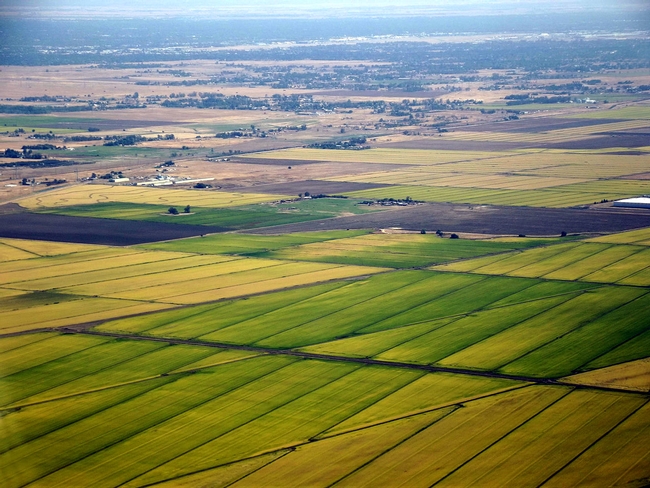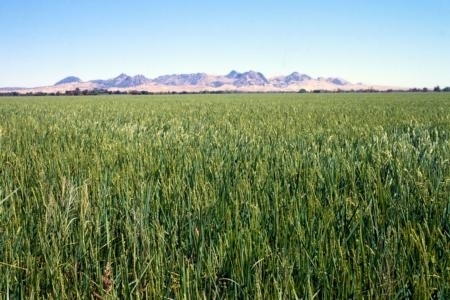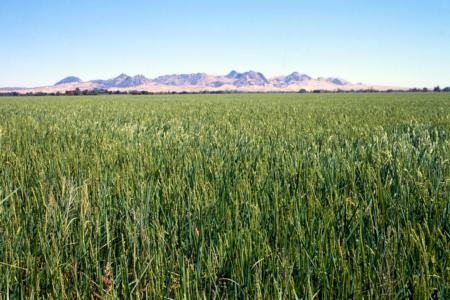Posts Tagged: rice
Rice planting proceeds despite drought
Water uncertainties delayed planting of the California rice crop, but it finally began the last week of April, reported Tim Hearden in Capital Press. The National Agricultural Statistics Service predicts 408,000 acres to be planted to rice in California in 2015.
“Planting is going full swing right now,” said Luis Espino, UC Agriculture and Natural Resources (UC ANR) rice crop advisor with UC Cooperative Extension in Colusa County. “With the water situation early on, everyone was expecting water deliveries to be a little late — the first week of May. Then it was actually delivered a little earlier than that.”
Planting is about two weeks ahead of schedule in Butte County, said Cass Mutters, a UC ANR CE rice farm advisor.
“This spring was unfortunately so dry and so warm that growers were out working their fields,” Mutters said. “As a result, the planting schedule is accelerated this year.”
Because water deliveries from the Sacramento and Feather rivers have been cut, some land that typically produces rice will be fallowed in 2015.
“It's hard to say how much, but my guess is it's going to be maybe 10 or 15 percent more than last year," Espino said. "Growers might not get surface water but might be able to pump here and there or get water from somewhere else. We'll see at the end what the actual acreage is.”
Rice planting moving along despite tight water supplies
Rice planting in California is well underway and taking place more quickly than expected, reported Heather Hacking in the Oroville Mercury Register.
Despite early worries about water supplies, Cass Mutters, UC Cooperative Extension advisor in Butte County, said 25 to 30 percent of rice acreage is planted; statewide about 10 to 15 percent of acreage has been planted. According to the article, rain in March delivered enough water to Lake Oroville for full water contracts to be honored.
Things could have turned out a lot worse, said Chris Greer, UCCE adviser in Sutter, Yuba, Sacramento and Placer counties.
A month ago it looked like 200,000 acres statewide would go without being planted, of a total of about 550,000 acres of rice land.
Greer told the reporter that farmers are still deeply concerned about the California water situation.
"It still worries you thinking about this winter," Greer said. "We're eking by as we can this year, but if we have another dry winter, I'm not sure we're going to be able to meet what we are delivering this year. That would be difficult."
Most rice is planted by airplane, but some farmers are experimenting with drill seeding. Drill seeding requires more labor, but results in more precise placement of seed and fertilizer in the fields.
Rice planting on schedule in Butte and Glenn counties
Despite light rain earlier this week, it appears the Butte and Glenn county rice industry is getting seeds in the ground during the ideal planting window, reported the Chico Enterprise Record.
The ideal time for planting rice is May 1-15, said Randall "Cass" Mutters, UC Cooperative Extension advisor in Butte County. As the date gets later, farmers will end up with a later harvest. Fall weather is more unpredictable and farmers could end up harvesting in the mud. Last year, farmers were still planting rice at the end of May.
"I would say overall (this year) we're between a week or two weeks ahead of schedule," Mutters said.
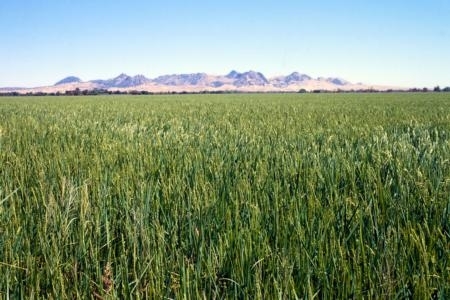
Rice planting is on track in 2013.
UCCE advisor reports on last September's mysterious rice slow down
When the calendar said it was time to harvest rice last September, the crop wasn't ready. Over the winter, UC Cooperative Extension advisor Randall "Cass" Mutters tried to solve the mystery of the untimely immature rice, reported the Oroville Mercury-Register.
Since the problem was ubiquitous in the Sacramento Valley, Mutters deduced the weather was the culprit. He crunched weather numbers, studying humidity, nighttime and daytime temperatures, and uncovered a plausible explanation.
Average temperatures were comparable to 2009, when rice growers enjoyed a bumper crop. But from Aug. 24 to Sept. 12, he said, there were 18 days in a row where nighttime temperatures fell below 55 degrees. The cold nights likely delayed the crop's maturity.
Reporter Heather Hacking also wrote in her story about a another presentation at the annual Rice Growers Meeting in Richvale, in which UCCE advisor Chris Greer commented on recent media attention about arsenic in rice and rice products.
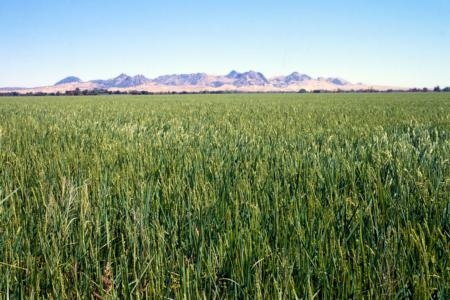
Sutter Buttes is in the distance behind this Colusa County rice crop.
California rice growers reduce greenhouse gas emissions
Butler is participating in a pilot program funded by the Environmental Defense Fund. Though it’s too early to measure, he has seen promising signs from the project.
“We’ve had good results with yield and water conservation, which really was our goal,” says Butler. “We’re happy that greenhouse gases go down as a result of that, but they weren’t the initial reason why we do that.”
Of the global GHG accumulation for all sectors, 0.001 percent comes from California rice fields, according to data compiled by Luis Espino, UC Cooperative Extension rice farm advisor for Colusa County.
“It’s such a new issue I don’t think much has been done in that area,” says Espino. “Right now UC Davis is doing the research, doing the modeling, trying to understand what goes on in the soil.”
Cass Mutters, UC Cooperative Extension advisor for Butte County, noted that California rice growers realize that being environmentally sensitive is part of their responsibility. Since the 1980s, changes in irrigation management and other practices have led to a 98 percent reduction in pesticide residues entering public waterways from rice fields. Along with water quality, the rice industry supports an air quality monitoring network that enables the Air Resources Board to model how many acres can be burned without exceeding federal air quality standards.

